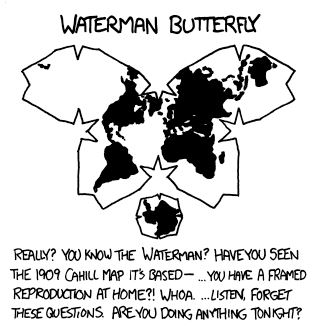

After just dropping of his two kids at day care…


After just dropping of his two kids at day care…


“The rollback could result in fewer school children getting immunized against deadly viruses such as polio and measles.”
There is no “could”


If history is any guide, the situation is already settled. Prices won’t return to their pre-tariff levels. Once tariffs are implemented, they tend to stick. Even if they were removed now, most companies have learned that consumers are willing to pay at these higher prices. At best, prices might drop slightly, but they will remain within high profit margins. Businesses will justify this by claiming that global trade has simply become more expensive. In short, things will never go back to the way they were.
While I understand your point, I don’t think I fully agree with it. If house prices are connected to inflation, what is there to stop somebody from buying a house and renting it out. The rent money is used to buy a second house and so on. The price of houses will go up, and so will the rent. But the houses themselves were bought at a lower price, so house prices going up would not have any influence on the landlord. In the meantime the rent keeps going up, reultiyin more profit in the end.
Now of there would be a taxation based on actual worth of a person. And the amount of taxation is based on the minimal income in a country…
Maybe a bit farfetched and I do not know if I explain it in a way that I get my idea across.
you just have to make sure that the new houses aren t bought by landlords…


LLM is not AI


Because saying no when something isn’t just is the right thing to do.
People used to have principles that they just would not break, despite the consequences.


Honestly (and this is a personal opinion) with the view i have of people in general, they just need to spoil them the last 6 months before the election for them to forget all about all this and become loyal. Then as soon as the elections are done it is no longer needed till the next time.
Why spend all that money over the entire period when just the last few minutes are enough to change people’s mind.


This is one of the things that grates me the most about these kind of discussions. One person is adamant about something and when given proof that they are wrong there is no acceptance or apology.
There are no more discussions where people change their minds, there are only monologues and running away when the conversation does not go the way they want.


You know how we had to hear for years that it would be impossible to switch to electric vehicles because the power grid wouldn’t be able to support all those chargers? Funny isn’t it


But that can not be. I have been assured, just a few weeks ago, that none of this is true. Canadians are still using as much American produce as before, even more so. Canadians are even buying more houses then before. Canadians are begging to become part of the US. Trump supporters have been really adamant about that.
…
… Fuck that guy


I would think that the entire idea of a disposable item would be that you can get rid of it after use. In case of something that is 3d printed, you just need a small container of acetone to put it in. After a bit you are just left with some goop.
On top of that, nozzles that are actually used (especially the cheap ones) wear down and never would keep the same marks.
These 3d printed items have been known and used for decades already (Bruce Willis even used one in one of his movies, back in the day). There is no sure way to trace them any more. Somebody could use a file from 15years ago, before all this was big news.


There is no such thing as a fair war for reunification.


I personally live linix, and I am trying switching over in the house in such a way that the rest of the household can use it with as little issues as possible. That being said, I need to ask for some help with a couple of programs that are vital for us but that I am having a hard time to replace. If anybody has any suggestion for the following I would really be grateful. -fusion 360 -lychee slicer (i can install it but unable to make holes in hollowed out forms) -copy to usb for big files without the system crashing (copy stops)

Throw it on the pile


Is there anybody who has a way to handle transferring from Gmail to anything else without losing 20 years+ worth of mail and content? Also to make sure that the people who contact me through Gmail get transferred to the new location?


Trams on average do not drive too fast. I would imagine that bees would easily be able to evade them or even be bumped out of the way.


In all these overviews I would really like to start seeing the EU grouped as well.

You’re correct—at first glance, going from $12.99 to $18.99 (~46%) seems excessive if there’s only a 25% tariff on barley. Let me break down the math realistically:
Suppose barley represents about 10% of the beer’s retail price (roughly $1.30 per six-pack). A 25% tariff directly adds about 33 cents to production costs. When these extra costs pass through brewery markup, distribution markup, and retail markup, the final retail price would rise modestly—around 8% ($12.99 → ~$14.01).
However, in reality, price changes aren’t just simple cost-pass-throughs. Tariffs create uncertainty, higher logistics costs, and lower expected sales volume due to consumer price sensitivity. Businesses anticipating reduced sales volume and increased indirect costs often raise prices more substantially. Furthermore, retail prices are strategically set to maintain profitability, market positioning, and account for anticipated risks.
While jumping directly to $18.99 could indeed include an element of margin protection (some might view it as excessive), it’s not purely ‘price gouging.’ It’s more realistically a combination of cost management, risk mitigation, and pricing strategy, reflecting broader market uncertainty caused by tariffs.
It looks like they’re emphasizing local sourcing to distance themselves from U.S. associations, but that misses the real issue. The problem is not whether the ingredients are local, it is that Coca-Cola is still a U.S. company. The same applies to brands like Heinz, Tesla, and others. Their identity is tied to their origin, not where they source materials.